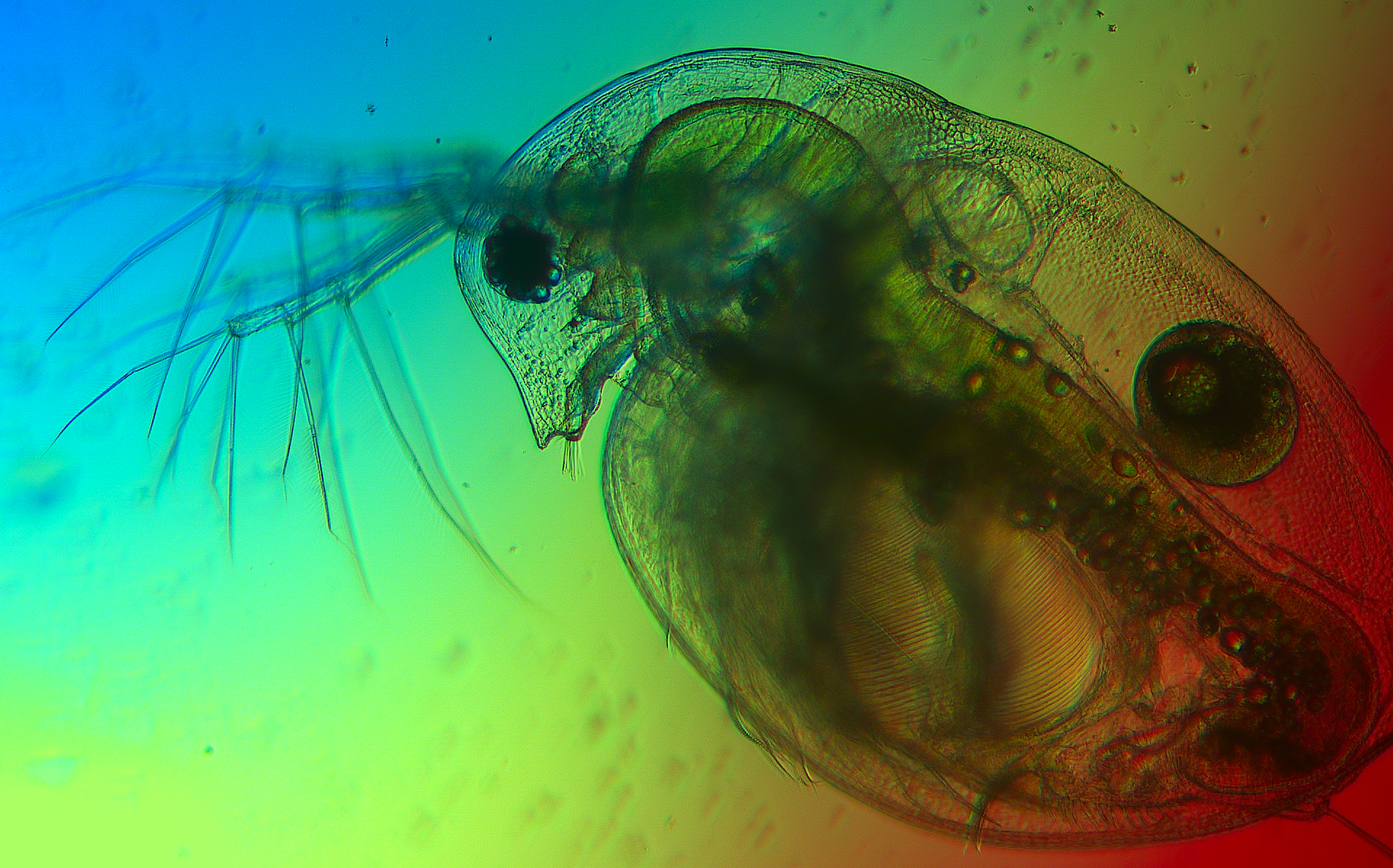The same applies to water fleas, copepods and fish: many organisms that live in water bodies are directly or indirectly reliant on phytoplankton. The microscopically small algae also play a crucial role for the climate as they absorb considerable amounts of carbon dioxide (CO2) in lakes and oceans all over the world, and also generate oxygen and substances that are valuable for the food web, such as omega-3 fatty acids. The phytoplankton obtains the energy it needs to perform these functions from the sunlight that penetrates the water. A recent joint study conducted by the University of Oldenburg and the University of Greifswald came to the conclusion that the colour spectrum of light is also important: from violet to indigo, blue, green, yellow and orange all the way to red - in other words, the seven colours of the rainbow.
Researchers have now discovered that these colours of light not only influence the phytoplankton, but also the feeding patterns in the lake. This is shown by a recent study carried out by the University of Oldenburg in collaboration with the University of Greifswald. It was published in October in the journal ‘Journal of Ecology’.
Sensitive food web in the lake
“Up to now, research into ecological processes in water bodies has mainly focussed on the amount of light,” says study author Sebastian Neun from the Planktology working group at the University of Oldenburg. “We can now demonstrate that the colour of light also has a direct influence on phytoplankton and subsequently on feeding relationships in the lake ecosystem.”
The researchers believe that future studies should place more emphasis on the light spectrum. “The amount of microalgae is increasing in many lakes, making them ever greener,” explains study author and planktologist Dr. Maren Striebel. “The light conditions under water will change even more in the future and will influence the sensitive food web between microalgae and higher organisms.” High nutrient inputs from sewage and agriculture are increasingly nurturing the growth of algae and, especially in combination with higher temperatures, are leading to regular algae blooms in bodies of water.
“Until now, research into ecological processes in water bodies has mainly focussed on the amount of light,” says Sebastian Neun from the Planktology working group at the University of Oldenburg’s ICBM. His colleague, PD Dr. Maren Striebel, from the same working group, adds: “We were now able to show that the colour of light also has a direct influence on phytoplankton, zooplankton and the material cycles in the lake ecosystem.”
Prof Dr. Alexander Wacker from the Animal Ecology working group at the University of Greifswald adds: “In order to improve our understanding of the mechanisms behind our results, we are simulating the changing light and nutrient conditions in lakes in laboratories at the University of Greifswald - using specially developed, computer-controlled experimental setups. This method should enable us to find out how plankton communities react to such conditions and elucidate the role the light spectrum in particular plays in the production of fatty acids, which are also vital for us humans.”
A lake becomes a research laboratory
In May 2022, the research team gained their findings from an experiment performed in a swimming lake in Niedersachsen. The scientists filled bottles wrapped in red, blue and green-coloured light filter films with phytoplankton from the lake and placed them in various positions under water.
Over a period of two weeks, the team observed how the microalgae developed under different light conditions and varying amounts of nutrients in the bottles. The researchers then analysed the phytoplankton in the laboratory in order to draw conclusions on its nutritiousness for water fleas as a result of the different light and nutrient influences.
The result: the less light rays reached the microalgae under water, the more important the colour spectrum became for their growth. In addition, different phytoplankton species reacted differently to the colours of the light. Both the nutrient content and the composition of fatty acids changed. This in turn influenced the growth of the water fleas, which feed on the microalgae. “This indicates that the colours of the light also influence the food web in the lake,” says Neun. “We can therefore see that the colour spectrum of light under water has a far greater influence than previously assumed.”
The team is already in the process of continuing their investigations into the special role of the colour of light for phytoplankton in a three-year research project.
Further information
Link to the study
Link to the page of the institute involved from the University of Greifswald
Contact at the University of Greifswald
Prof. Dr. Alexander Wacker
Zoological Institute and Museum
Animal Ecology
Loitzer Straße 26, 17489 Greifswald
Tel.: +49 3834 420 4266
alexander.wackeruni-greifswaldde
Contact at the University of Oldenburg
Sebastian Neun
Institute for Chemistry and Biology of the Marine Environment
Planktology working group
sebastian.neununi-oldenburgde

